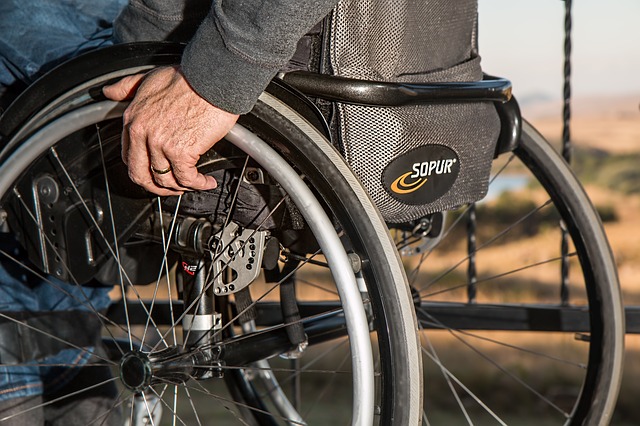Could electrical devices implanted in the spine help make wheelchairs a relic of the past? Dr Ioannis Dimitrios Zoulias looks at recent biomedical engineering breakthroughs and where they might lead in a new post for The Conversation.

Someone in the world suffers a spinal cord injury every one to two minutes, often leading to irreversible and life-changing loss of movement and feeling. But two research groups recently achieved something that had never been done before. By implanting electrical devices directly on the spinal cord, they reversed some of the effects of the spinal cord injury and allowed people to independently walk again.
So does this mark the end of the road in considering spinal cord injury as an incurable condition? Or is there still a long way to go before wheelchairs become a thing of the past?
Researchers have been trying to use electrical stimulation to reverse the effects of spinal cord injuries for more than two decades . Artificially increasing electrical activity in the spinal cord helps to activate the nerves that transmit information between the limbs and the brain. While some nerves are permanently damaged by spinal cord injuries, some healthy nerves usually still exist even in the most severely damaged spines, and the electrical impulses give them a boost. In the past two months two studies have been published that significantly push the boundaries of what can be done with this technology.
In a study directed by Kendal Lee and Kristin Zhao at the Mayo Clinic in the US, a patient with complete paralysis in their lower body managed to walk 100 metres with a walking frame thanks to a spinal implant. This kind of device, called an epidural electrical stimulator (EES), sends electrical signals to the healthy nerves at the bottom part of the spine (which must be intact in order for the technique to work).
The device uses a pulse generator implanted under the skin to send the appropriate signal to electrodes attached to the dura, the protective layer for the nerves in the spinal cord. The procedure is minimally intrusive and patients can return home on the same day. Living with the implanted stimulator is in many ways similar to living with a pacemaker device.
EES devices have been tested on patients with paralysis before, but to overcome these sorts of complete spinal cord injuries represents a phenomenal outcome and a new milestone in restoring motion.
But the study only showed how improvements could be made while the implanted device remained operational. This shortcoming has now been addressed by another study of three patients with partial spinal cord damage by researchers from EPFL in Switzerland. After five months of spinal stimulation, the patients found some of their feeling and movement was restored even when their implants were turned off. One of the patients showed enough improvement when not using the device to change their injury classification from “C” to “D”, representing the least severe injuries.
The device worked in real time, delivering precise stimulation to the relevant part of the spinal cord at the exact time it was needed, which made using it much more intuitive. The initial results also emerged within a couple of weeks, rather than the months of rehabilitation usually needed.
Unprecedented breakthrough
These studies have shown unprecedented results in treating spinal cord injuries. These breakthroughs are coming as a result of both technological advancements in implanted devices as well as an increasing understanding on how our brain communicates with and controls our body.
Having demonstrated the proof of principle for applying spinal stimulation on people with paraplegia, it is now time to push the boundaries of this technique outside the confines of the lab and into the real world. Researchers will need to conduct bigger clinical studies that observe a much larger number of patients from their initial injury and device implantation through to the end of the rehabilitation. We need to assess the full advantages of the treatment and create standards for doctors to follow before this treatment can become available to the wider population.
It’s still uncertain if people with the most severe spinal cord injuries will benefit from the improvements when the device is switched off. Particularly for those with injuries so severe that no nerves are preserved at all, it is likely that this approach will not work, as there is no remaining signal to boost. In those cases, other techniques that try to bridge and repair injury will be needed to offer improvements.
Yet while we might not have so far found a way to cure spinal cord injuries once and for all, the growing volume of results from independent research groups using a variety of approaches makes it seem certain we will reach that day soon.
This post first appeared on The Conversation, 16 November 2018. Dr Ioannis Dimitrios Zoulias is a Postdoctoral researcher in biomedical engineering at the University of Reading whose research interests include virtual reality, robotics, biomedical and rehabilitation engineering, and brain machine interfaces. His work applies engineering techniques to better understand the human brain and body, and uses bio-medical engineering for improving the quality of lives of people living with disabilities.
